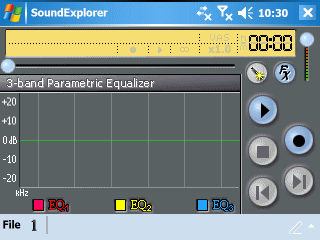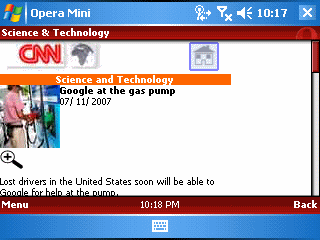Like most people I read the Google Open Handset Alliance reports with great interest (here’s MSNBC’s report if you haven’t read any of the reports yet). At the end of the day (quite literally in the case of writing this blog item), what’s the deal?
First, no handsets will be available until the 2nd half of 2008. In Internet time, that is forever. The Symbian and maybe UIQ based phones will probably have some kind of response by then. Palm OS seems mired in development issues. And, Windows Mobile shows no signs of evolving much past where it was when the Pocket PC 2002 came out. Apple, of course, is the possible spoiler. But, um, Google’s CEO Eric Schmidt sits on Apple’s board. I wonder if…
(Second) this is the reason the Google based phones will not be available for essentially another year and they have not signed up AT&T Wireless (which has the exclusive to the Apple iPhone). US mobile service providers Sprint (#3 in the US) and T-Mobile (#4 in the US) signed up. But, Verizon Wireless (#2 in the US and with a history for turning off features such as Bluetooth file copy and Bluetooth shared modem) has not signed but is said to be in talks.
Third, Google’s strategy will probably assume an always connected model. Microsoft’s Windows Mobile has an excellent client software model. But, they too are focusing on model that assumes you are always connected (read my earlier rant on this topic at: Windows Mobile Focusing on Windows Live). Some of us (a lot of us? most of us?) spend part of the time either completely out of mobile carrier signal range or in poor data quality situations. For those of us in that situation, always connected is not part of our reality. Client resident software is a good thing.
Fourth, T-Mobile is limited to relatively slow (but cheap!) EDGE wireless data. Sprint PCS has the faster EVDO available and has, I guess, some kind of WiMax plan. Unfortunately, they appear to have customer retention and net income issues (see this RCR Wireless News article).
Fifth, it is very interesting that HTC signed on as a handset manufacturer. This was no secret of course. But, HTC has been (as far as I know) producing only Windows Mobile based phones up until now. And, IMHO, they are pretty much responsible for most of the innovation we have seen in the Windows Mobile space in the past few years. It will be interesting to see what the combination of their hardware design skills and Google’s software design skills creates. More importantly, will HTC’s top engineers be moved from Windows Mobile hardware projects to the Google phone project? This might mean a drop in innovation for the Windows Mobile space.
Sixth, the presumed low price (Google is providing their phone software for free) of the new phones combined with their presumed coolness factor should make life miserable for Microsoft, Nokia, and Sony-Ericsson in the consumer space. The enterprise space is if-fy if you assume that Google’s phone must tie into Microsoft Exchange Server and IBM’s Lotus Notes to make inroads to the enterprise space.
Seventh, and finally, although the Google phone does not appear to have the closed-system Apple iPhone issue (at least for now), it remains to be seen how much innovation we’ll see from third party developers. It’ll be interesting to see which developers get seeded with prototype phones.

